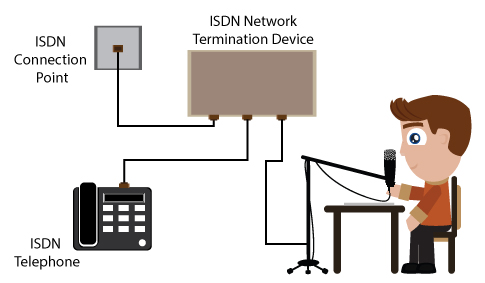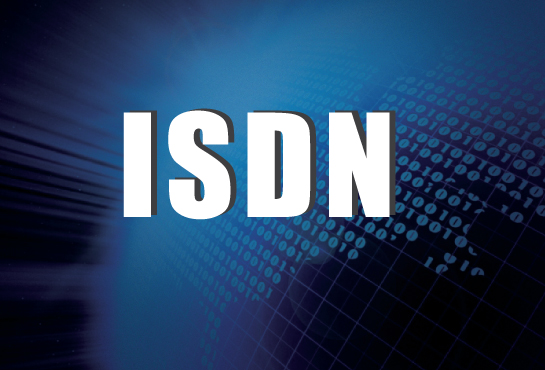ISDN is a dying technology but no one can say when it will become a museum piece. To be on ISDN or not to be that’s the question for both established voice talents and VO studios.
The debate is recurrent because it’s old technology that is still in use by many producers. Old habits die hard. Having said that it’s always been an accepted view in the VO industry that it’s possible to carve out a decent career for yourself in voice over without an ISDN line but if you want to play in the big leagues and become a truly global VO artist then having an ISDN line is an option you should consider as much as Source Connect.
We can argue that with some, probably less and less (old fashioned but powerful) accounts , you’ll never get the really lucrative well-paid gigs without having ISDN or Source Connect.
Wait a minute. Is this still true? At the moment you could argue that there is still an element of truth to this. For recording remotely from one location to another, irrespective of where you are in the world, ISDN is still the preferred choice of many producers and studios.

However, ISDN is a bit of a dinosaur! You would be hard-pushed to find the big telecom providers caring about ISDN anymore and many of the providers have actually kicked ISDN into touch, opting for digital technologies such as Source-Connect instead. Even Skype is a reasonable alternative that is used more and more. As 4G and fiber spread, distant recording is becoming the norm, not the exception. So a director has no excuse to follow a voice talent, no matter how far they are from each other.
Despite this, you could say that the death of ISDN has been greatly exaggerated! For recording from one country to another on high-paying gigs like commercials, promos and movie trailers, ISDN is still alive and kicking and being used by most big studios across the world.
So what would it take for the big studios to stop using ISDN?
Well, it does seem strange that in an industry which normally embraces new technology and change that the ISDN still prevails. However, as indicated earlier, it’s only a matter of time before a more sophisticated broadband option takes its place and ISDN is no longer provided or supported.
We’ve already got Source-Connect but that hasn’t been completely embraced by the VO industry yet. There are also other technologies such as ipDTL which is creating a lot of buzz at the moment, and could potentially be a viable replacement.
- Whatever the future replacement for ISDN will be, as voice over artists we all operate in the here and now. With this in mind, what is the best advice for a VO artist who is looking to take their career to the next level?
- Should they bite the bullet and go for ISDN and the high costs associated with installing and renting it?
- Should they go for Source-Connect?
- Should they research other pioneering options such as ipDTL?
- Should they hold fire and if a big gig comes along, find a studio with an ISDN in and rent that?
- Aren’t you more likely to get the big gigs in the first place if you’ve got your own ISDN rather than trying to hunt down an ISDN-ready studio should a great job come along?
Lots of questions, but not many answers! It’s over to you my fellow VO artists. How would you answer these questions? It would be great to get your views.


When it’s a live-direct (yes, better paid!) it has had to be Skype-plus-file, because ISDN doesn’t reach into my rural village. ipDTL of course does – and copes with our 375 kbps ADSL upspeed. Excellent audio, no glitches in 30 min trial UK-USA. It’s a matter of studios deciding to trust the web and give it a try.
Thanks for sharing that information. Yes ISDN implies a more and more restricted service from Telecom companies. Broadband and 4G if that reaches you are great alternatives
I have not heard too much about ooVoo, but it appears to be in the same vein as Skype, Facetime and Google Hangouts. The basic problem with these to be a viable replacement for the ISDN dilemma is simply the latency issues. I skype and do Hangouts regularly and find the lagging video and audio frustrating. I have only just recently heard about the ipDTL, and it does look promising. Another option, not mentioned here, is Sound Streak (www.soundstreak.com). This too could be the next logical step to phase out ISDN. No extra equipment, free for the Talent, producers pay per usage. Win, win, win, baby!!
If you check out SoundStreaks web-site, you’ll hear a familiar voice on their tutorials. Dave Courvoisier.
ISDN may be a dinosaur, but dinosaurs were around for thousands of years. lol… Personally, I will keep ISDN as long as the telecoms and studios support it. I not only use it for myself, but have also rented out my studio for voiceover sessions for national spots. So for me it’s a ‘keeper’.
Best advice for VO talent? If you can afford it then I would invest in ISDN.
BUT make sure your voiceover ‘skill sets’ warrant it. Keep in mind that ISDN production houses expect a certain level performance and professionalism from those with ISDN. If you don’t possess those skills first, then it’s a total waste of money.
ipDTL? What’s the rush? Wait until the all bugs are worked out before jumping in.
Likely to get the ‘big gigs’ in the first place question? See my first answer.
Thanks for the post!
Thanks for your feedback
It’s a question of ROI, so if you have a critical mass of clients who still use ISDN and you get well-paid gigs with it, then it’s worth it. Otherwise, it’s time for questioning. At our studio we have ISDN and we pay the monthly fee to the Telecom company but we use the ISDN line as a phone landline, so then the cost is peanuts. Our investment was made many years. It was a special audio card in an old recycled computer running a software called Audio TX. It works fine.